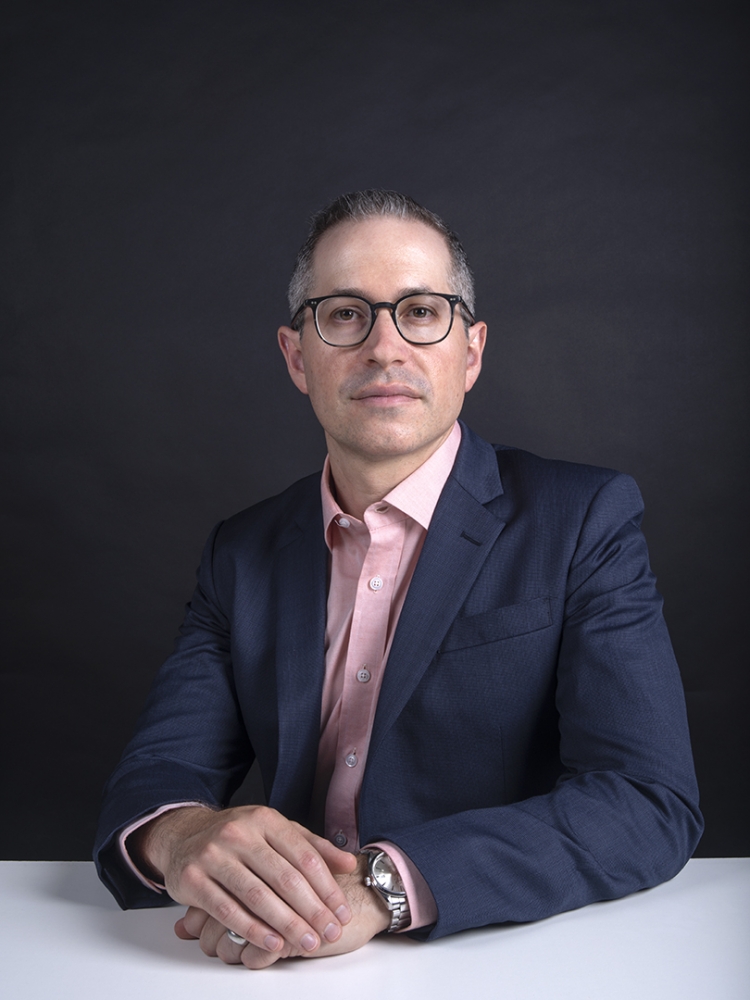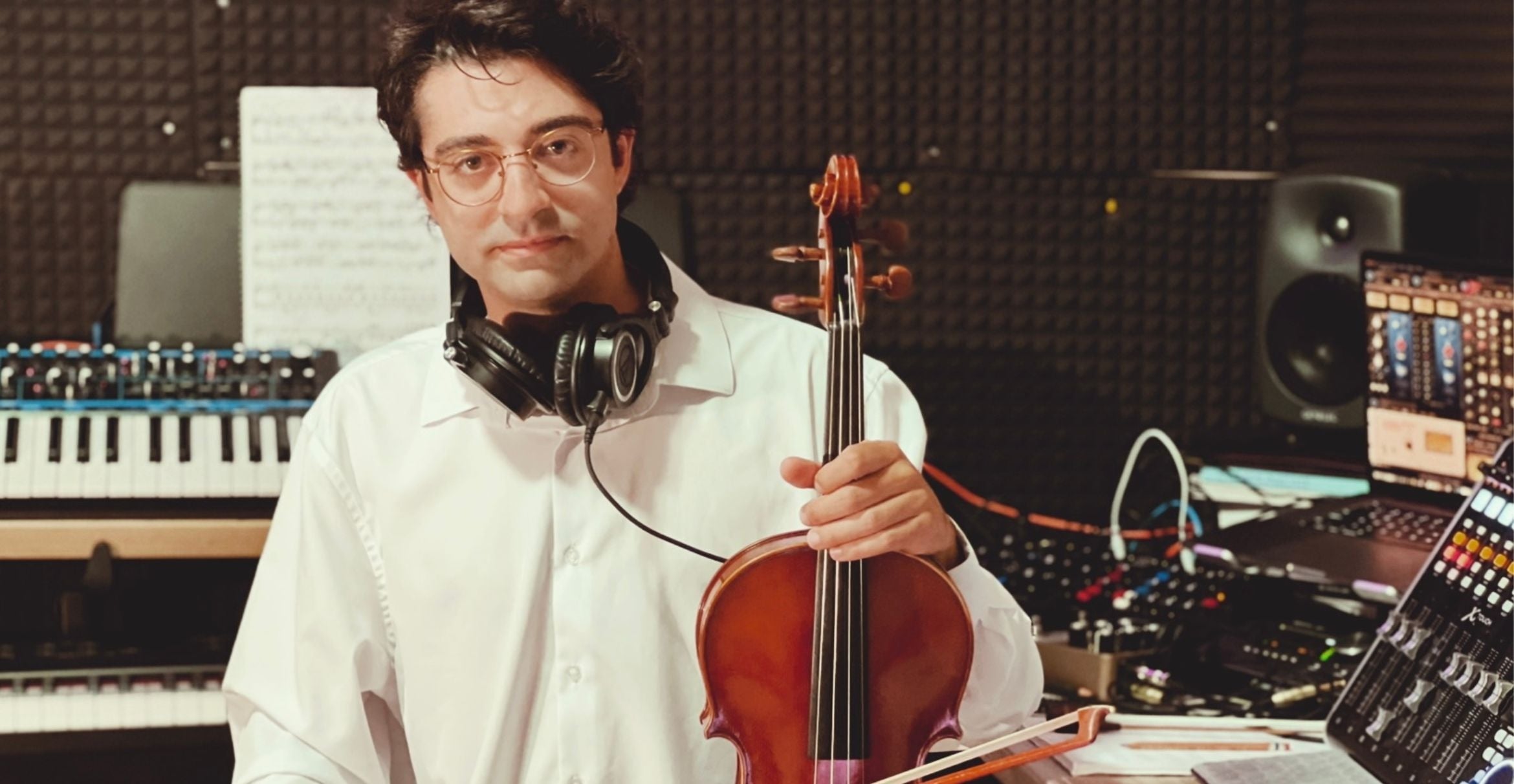
After a pandemic-induced closure of more than a year-and-a-half, during which exhibitions appeared solely online, UC Santa Barbara’s Art, Design & Architecture Museum has reopened its galleries to the public with three shows, a schedule of events — and a new director.
Gabriel Ritter, an expert in Japanese modern and contemporary art and in museum studies, joins the campus from the Minneapolis Institute of Art (Mia). At UC Santa Barbara he will both head the AD&A Museum and teach as a new faculty member in the Department of History of Art and Architecture (HAA).
“We are pleased to welcome Gabriel Ritter to UC Santa Barbara to lead our Art, Design & Architecture Museum into the future as our new director,” said Chancellor Henry T. Yang. “With his robust experience at top art institutions, he has the expertise and vision to grow and diversify our permanent collections and help our campus and local community discover important works through gallery exhibitions. In his additional faculty role within our Department of History of Art and Architecture, Dr. Ritter will significantly contribute to our academic programs in art history and museum studies and enrich the education of our students.”
Prior to his five years as Mia’s curator and head of contemporary art, Ritter held curatorial positions at the Dallas Museum of Art and at the Museum of Contemporary Art (MOCA) in Los Angeles. He has curated a large number of influential exhibitions, with an emphasis on the work of emerging and underrepresented artists from the U.S., Europe and Asia. Ritter holds a doctorate from UCLA.
Bringing academic passion for critical inquiry into art history, and deep professional experience in art curation, Ritter will shepherd the ongoing evolution of the museum and play a key role in expanding the HAA’s museum studies program.
“I am really excited about the promise the AD&A Museum holds as a teaching institution that, first and foremost, serves students and faculty on campus,” Ritter said. “I see the campus community as our core audience and our most important stakeholders, and am excited to connect with UCSB students and faculty and see how the AD&A Museum can be a more active partner in their academic/collegiate lives. I was also drawn to the amazing intellectual resources a university museum like the AD&A Museum has at its disposal. The possibilities of partnering with student, faculty and alumni on future exhibitions and programming seem endless.”
“On behalf of the Division of Humanities and Fine Arts, I am delighted to welcome Gabriel Ritter to our campus as director of the Art, Design & Architecture Museum and as associate professor in the Department of the History of Art & Architecture,” said Mary Hancock, acting dean of humanities and fine arts. “Ritter’s academic training in modern Japanese art, his experience in contemporary art curation and his skills in community building and outreach will enable him to lead the AD&A Museum into its sixth decade as an innovative campus institution and cultural resource for the entire Santa Barbara community.”
It’s a community Ritter is familiar with already. A native of Los Angeles, he frequently visited Santa Barbara with his parents growing up, touring the Santa Barbara Botanic Garden, eating at Joe’s Café and meandering the long-beloved, now long-gone bookstore Earthling. The fond memories and beauty of Santa Barbara were part of what drew Ritter to the university. But bigger still, he said, was “its unique location between Los Angeles and San Francisco.”
“While I am still familiarizing myself with the cultural specificities of the Central Coast, there is something to be said for being in close proximity to these major cultural hubs, but also having the distance to cultivate a community’s own identity on their own terms,” Ritter said. “Additionally, there are particular assets that are unique to UCSB such as the museum’s Architecture & Design Collection (ADC) and the library’s California Ethnic and Multicultural Archives. Having these amazing resources at our fingertips is really special and will provide endless opportunities for future research and potential exhibitions.”
Coming into his new dual role, Ritter characterized it as a “dream job,” enabling him to connect with young scholars on matters of art, equity, the role of art in society and how the museum field can, and needs, to adapt. It also, he hopes, will allow him to “emphasize the social dimension of art in the museum’s presentations.”
“Our visitors should see themselves — their identities and their realities — reflected in the work exhibited, while also being challenged to empathize with contrary truths, opinions and ways of being,” Ritter said. “I feel strongly that the ideal environment for these conversations is the university art museum, where students, faculty, staff and community members alike can engage with a diverse range of art practices with open-mindedness and criticality. In this way, art can provide an important lens for cultivating empathy and understanding of others, while also providing a framework to actively question and potentially dismantle systems of oppression many are faced with on a daily basis.”
Silvia Perea, curator of the ADC and, until Ritter arrived, acting director of the museum, said her new colleague will bolster the AD&A Museum’s endeavors to “become an even more inclusive think tank about social agency and an even more powerful incubator of related actions.”
“Gabriel Ritter has worked in some of the greatest and largest museums in the U.S., which operate with extensive networks, ambitious programs and powerful fundraising means,” Perea said. “Based on his rich experience at these museums, he will grow the AD&A Museum’s standing on campus, in our community and beyond. His managerial and curatorial background in those global institutions will benefit the continued expansion and care of our collections while enhancing the museum’s digital outreach and service. Additionally, his expertise in modern and contemporary East Asian art will favor the museum’s longstanding interest in expanding our holdings of this origin and attracting to our galleries more members of the Asian community.”
As a new associate professor of the history of art and architecture, Ritter will also tap into his professional experience to “develop courses in museum studies that embrace non-western exhibition historiographies and explore comparative models of curatorial practice within a broad global context,” he said. A course he’s already planned for spring quarter will look at topical issues facing the museum field, such as equitable representation.
“The UCSB Department of History of Art & Architecture is filled with such amazing scholars and really cultivates a collaborative and interdisciplinary approach,” he said. “Their emphasis on global perspectives and intercultural exchange is very close to how I’ve approached my own research and curatorial projects in the past, so I think I will be very much at home. The prospect of working cross-departmentally with colleagues in other areas is also incredibly exciting.”
He’s got a perfect learning lab in the museum: Ritter said he’ll use the AD&A Museum galleries “as an expanded classroom, and the museum’s permanent collection as teaching tools for educating and inspiring the next generation of art historians and museum curators.”
Ritter’s arrival is a win-win, then — for the museum he now runs and for the academic department he has joined.
“Gabriel Ritter’s presence in the department permits us to expand further our interdisciplinary emphasis to the transpacific projects fostered by the departments of East Asian languages and cultural studies, art, film and media studies, and English, among others,” said Laurie Monahan, department chair of HAA. “We look forward to his input and participation in our Museum Studies program, which we are planning to develop more extensively at both the graduate and undergraduate level in the coming years, and welcome the opportunity to work with the AD&A Museum.”



